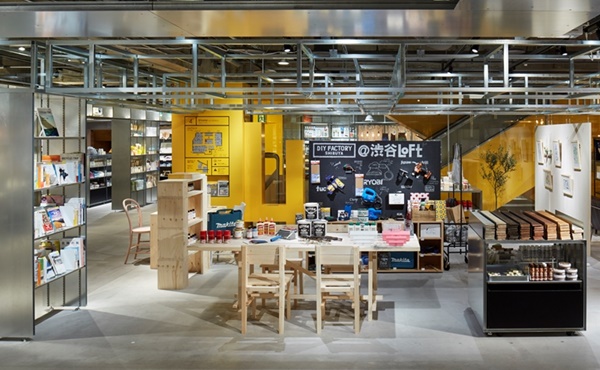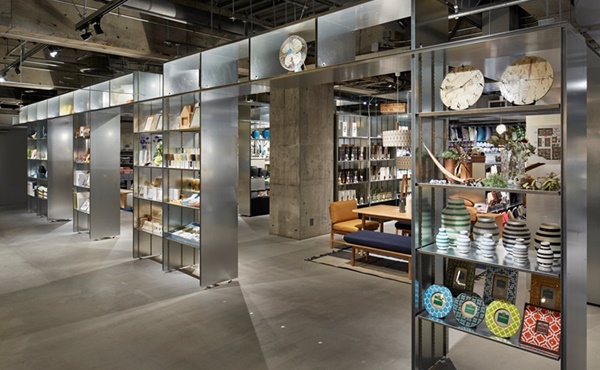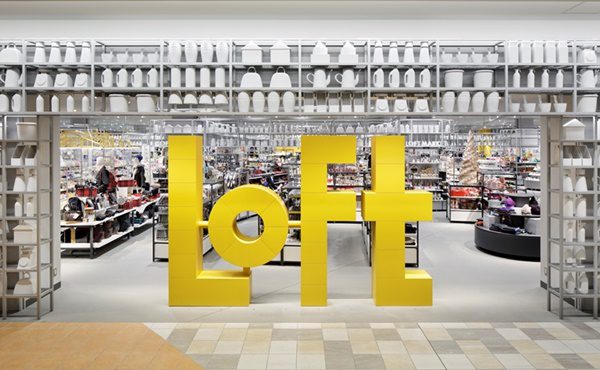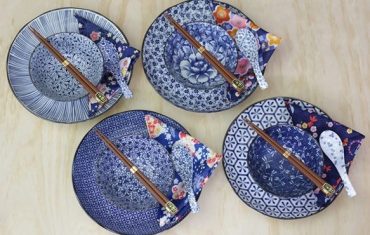Loft is celebrating more than its gia win in Chicago this year. “2017 marks 30 years since the first Loft store opened in Shibuya, Tokyo, so entering gia became a significant opportunity for us to review everything by going back to where we started, and in doing so, make a new start on our birthday,” says Iimura, who is in charge of merchandising, business planning and new business development at Loft.
“Thanks to gia, we were motivated to explore our global standpoint and our future goals.”
Loft’s first store sold lifestyle accessories in Shibuya’s Seibu department store. Since then, Loft has constantly evolved yet remained true to its core purpose and philosophy of being a ‘container of the times’, adjusting to changes of each period and era, and thus meeting the needs of urban people by providing new styles and tools in lifestyle products.
“Being market-oriented, we don’t force the logic of our manufacturers or suppliers on to our consumers. Instead, we collect and select merchandise with a consumers’ logic in mind, and operate our business on behalf of consumers,” says Iimura.
In 1996, Loft was incorporated as The Loft Co, and after the company introduced its innovative unit item inventory control system, it increased the number of stores rapidly.
Now Loft has 110 stores in Japan, and to add to its many reasons to celebrate, soon Loft is expected to achieve its mid-term plan of reaching 100 billion yen turnover.

“In 1996, Loft began to adopt its multi-store operation strategy, which would essentially serve an increasing number of customers,” explains Iimura.
“While doing this, we strengthened our merchandising proposal of always offering new, great things, to ensure that our current customers remained loyal and that more people were attracted to Loft.”
But of course, it’s not all about the products. “We strive to present not only unique products, but services that can only be found in Loft,” says Iimura, explaining that his team adopts the ‘Loft WAY’ strategy to inspire customers on how to embrace and live the store’s philosophy, and ‘Loft NEXT’, which is the idea of change being explored and exploited in the company’s online strategy, through omnichannels that provide a fusion of e-commerce.
This focus on taking advantage of new technology has kept Loft at the top of its game.
“There have been drastic changes in the Japanese retailing industry during the last decade, such as the entry and immediate expansion of discount stores,” explains Iimura.
“In the miscellaneous accessory product category (‘zakka’ in Japanese), many companies from different industries such as fashion designers, joined the zakka market and further heated the competition. Alongside this, the rapid growth of ecommerce massively influenced the retailing industry, decreasing sales in traditional stores.”
As these shifts occurred, Loft continually analysed its inventory data, updated and adopted new IT systems, and unified the management for ordering, buying, logistics and sales with a unit control system. This system identifies items that sell well or poorly, giving management the chance to follow the changing tastes of Loft customers.

In addition, the team at Loft organises and proposes new merchandise groups or lines with new themes on a quarterly basis, while privately developing in-house products in order to maintain a strong point of differentiation.
Loft has also adopted new technologies such as a 3D computer system to develop customised products and services, and a mobile application membership was created in order to analyse sales, shopping behaviours and customer profiles. To complement this, events were launched where SNS (Social Network Site) influencers are invited along, as part of the synergic sales promotional activities, online and in real stores.
Amidst all of these technological developments, Iimura and his team are acutely aware that they need to stay in touch with some of the more traditional elements of retailing—such as good old-fashioned service with a smile.
“As technology advances, I feel that many channels are becoming more entangled and complicated,” says Iimura.
“As this happens, the values of consumers tend to be further subdivided. In order to respond to consumers’ intentions, retailers should adapt to technological novelties, but at the same time, this gives us all an opportunity to review our history, and traditional things and approaches. This means we can still experience and touch the good analogue elements of retail.”
Taking care of their staff is also a crucial element of the company’s business plan, and they like to give their staff a solid sense of job security.

“By sustaining the company’s growth and prosperity, we give our employees good working conditions, thorough training in all departments, and their employment is guaranteed until the age of 65, so that they can enjoy cultural lifestyles,” says Iimura.
Loft managers take the look and feel of their stores very seriously, and testimony to this is the fact that by November 2016, there were 260 visual merchandising experts working across the stores. Those experts work closely with the marketing division of the head office to ensure campaigns and ideas are consistent across Japan.
The appearance of the stores and products at Loft is a special element of the business. In keeping with this, Loft has a range of cleverly themed zones for customers to be inspired by. The spaces were brought to life by the MIKAN architectural firm in Japan, famous for creating amazing modern, light-filled spaces, whether they be houses, nurseries, schools, commercial facilities or an expo pavilion.
For instance, ‘& HOME’ floors in the Shibuya Loft store are organised into Eating on the third floor and Renovation on the fourth floor. To complement the products, towers of carefully chosen books related to the themes are placed on sales floors so that customers can deepen their knowledge of products and grow their interest. There’s the Cook & Dine sales floor where different eating styles are introduced, such as Café Style and Bento (lunchbox) Style. All zones are entertainment spaces, with themes such as cooking, eating, tasting and learning flowing from one to another like the pages in a book or a magazine.

“We really enjoyed the supreme, honourable moment when our company was selected by the judges and jury as a gia Global Honoree,” says Iimura.
“When it was announced at the gala dinner, we were lost in happiness and excitement. The atmosphere of the whole ballroom was heated with high-voltage energy. Then we enjoyed friendly conversations with the distinguished judges, as well as with other winners. We all shared those joyous moments, and all of them are now unforgettable memories.”







